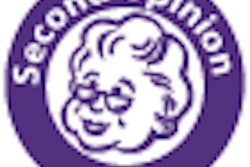Nearly a dozen imaging-related topics are on a list of 100 research priorities published by the U.S. Institute of Medicine (IOM) indicating areas that should receive priority for funds available under the American Recovery and Reinvestment Act (ARRA) of 2009.
In passing ARRA, Congress allocated $1.1 billion in funding to aid comparative effectiveness research to identify what healthcare technologies and practices work best under which circumstances. Congress asked the IOM to recommend national priorities for the funding, which it does in its new report, "Initial National Priorities for Comparative Effectiveness Research."
The recommendations are based on quartiles, with those in the upper quartile having the highest priority. The imaging-related priorities are as follows, by quartiles, with those in the first quartile having the highest priority (a topic's position within the quartile does not reflect its priority rank).
First quartile
- Compare the effectiveness of management strategies for ductal carcinoma in situ.
- Compare the effectiveness of imaging technologies in diagnosing, staging, and monitoring patients with cancer including PET, MRI, and CT.
Second quartile
- Compare the effectiveness of film-screen or digital mammography alone and mammography plus MRI in community practice-based screening for breast cancer in high-risk women of different ages, risk factors, and race or ethnicity.
- Compare the effectiveness of new screening technologies (such as fecal immunochemical tests and CT colonography) and usual care (fecal occult blood tests and colonoscopy) in preventing colorectal cancer.
- Compare the effectiveness and outcomes of care with obstetric ultrasound studies and care without the use of ultrasound in normal pregnancies.
Third quartile
- Compare the effectiveness of traditional risk stratification for coronary heart disease (CHD) and noninvasive imaging (using coronary artery calcium, carotid intima media thickness, and other approaches) on CHD outcomes.
- Compare the effectiveness of traditional and newer imaging modalities (e.g., routine imaging, MRI, CT, and PET) when ordered for neurological and orthopedic indications by primary care practitioners, emergency department physicians, and specialists.
Fourth quartile
- Compare the effectiveness of CT angiography and conventional angiography in assessing coronary stenosis in patients at moderate pretest risk of coronary artery disease.
- Compare the effectiveness of diagnostic imaging performed by nonradiologists and radiologists.
Copyright © 2009 AuntMinnie.com



















